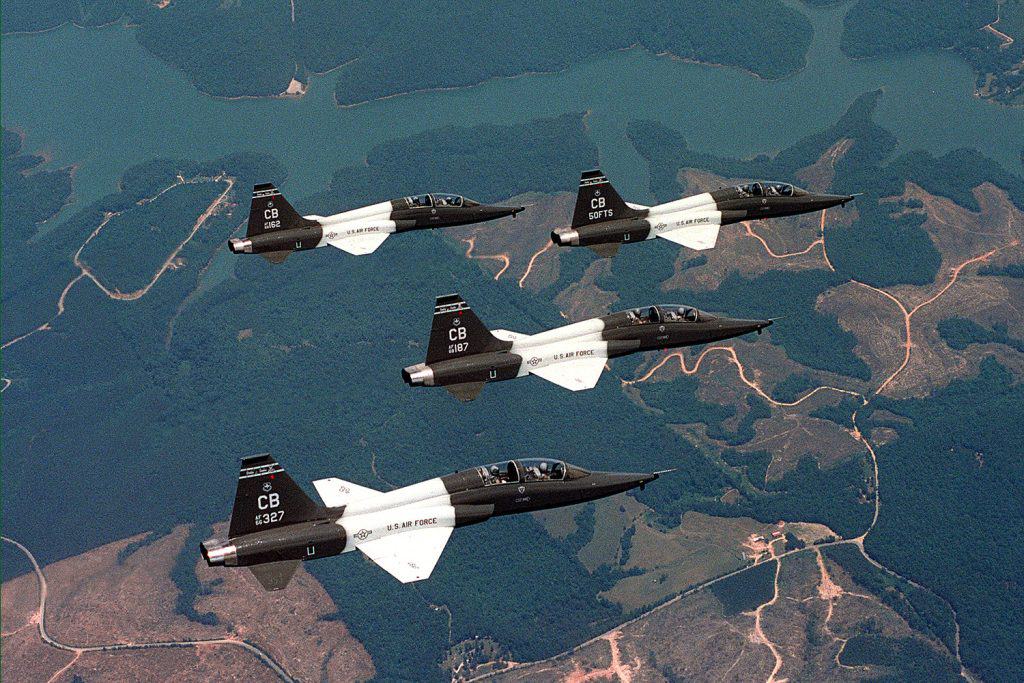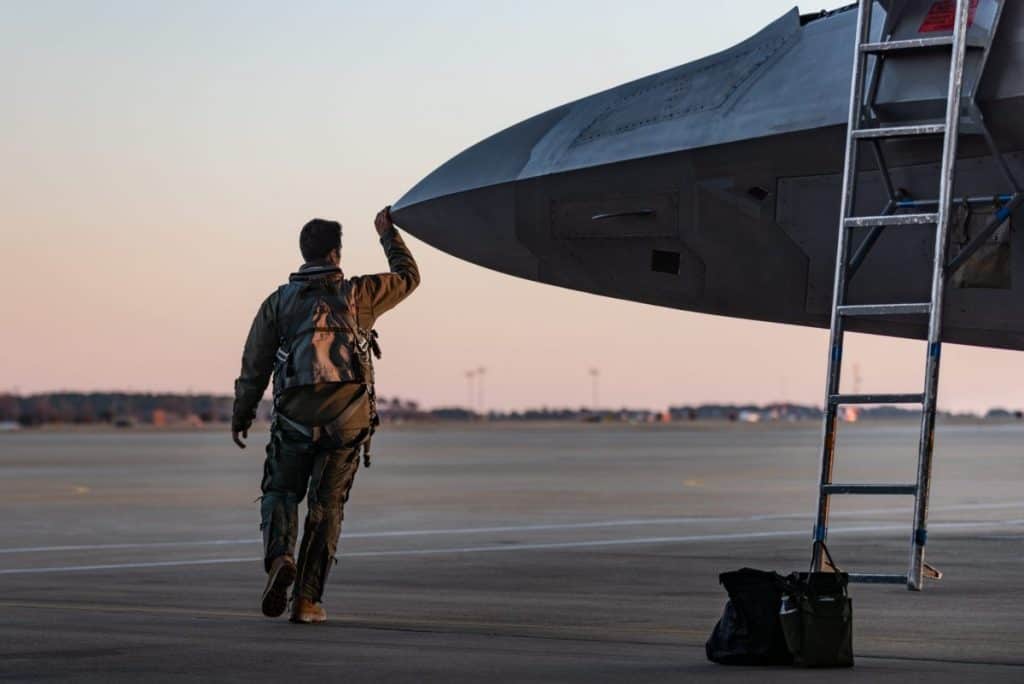Air Force vs Air National Guard: Initial Aircraft/Location Assignment

I can still remember my first day of pilot training. The majority of the officers in my 30 person class were recent graduates of the Air Force Academy, while only a few of us represented the Air National Guard (ANG). If I’m being completely honest, I was little intimidated by how confident those guys seemed.
After four years of grueling officer training, the Academy grads understood the military jargon and knew each other well. Many were stationed at the base for several months before starting class, so they already knew their way around and had all the “gouge” from their friends in other classes.
Simply put, to a guy who didn’t know anyone and who barely knew how to salute after my six week crash course of officer training (it’s now 8 weeks), they seemed to have it all figured out. However, the one thing they didn’t understand was the fundamental difference between how the active duty (AD) and ANG assign aircraft and bases.
We started our class the same way most classes start on day one—we went around the room, stood up, and gave a brief introduction with our name, where we were from, and what we wanted to fly. “Hi, I’m Sam from California, and I want to fly fighters.” “Hey, I’m Joe, and I’ve always wanted to fly C-17s.” The introductions continued around the room, each describing the aircraft they dreamed of flying.
The introductions were a little different once it got to the guard guys; “I’m John with the ANG, and I’m going to fly the F-15.” “I’m Jason with the Alabama ANG, and I’m going to fly the F-16.” “I’m Chris from the Hawaii ANG, and I’m going to fly the KC-135.”
It quickly became apparent that despite four years of living and breathing the Air Force way of life while at the Academy, most of these guys had zero clue that the ANG not only sent people to pilot training, but more importantly, that these people knew what they were going to fly and where they would be stationed before they ever started UPT. Their reactions ranged from disbelief to anger.
In my opinion, ANG flying slots are perhaps best kept secret in military aviation. The fact that it is such a “secret” is one of the main reasons why BogiDope was started—we want all perspective aviators interested in serving our country, like those hard charging Academy grads from my UPT class, to know what all the different options are before they choose the path that’s right for them.
As I already eluded to, potentially the biggest difference between the active duty and ANG is how aircraft and bases are assigned. In the next two parts, we’ll examine a basic overview of how the active duty and ANG aircraft/base selection processes differ to provide you with the comparison that many of my classmates never received all those years ago.
Active Duty Aircraft Selection Process
As an active duty pilot, you will indirectly compete with your classmates throughout your pilot training. How well you do relative to your classmates (who has better test scores, who has less downgrades on checkrides, and how your commander perceives your overall performance) will determine your class ranking. That ranking determines the order in which you and your classmates get to select what the next phase of your training will be from what’s available at the time. The available selections are based on the needs of the Air Force. There are two key events that dictate which aircraft you will fly; they are known as “track select” and “assignment night.”
Track Select
The first six months of UPT will be spent flying the T-6 Texan II. At the end of T-6 training, you will fill out a “dream sheet” listing in order of preference the tracks you want to take.
There are essentially three different tracks that you can choose: fighter/bomber, heavies, and helicopters. In a 30 person class, you can typically expect only a couple helicopter slots, 5-10 fighter/bomber slots, and the majority to heavies. If you’re ranked number one in your class, you get your first choice of what’s available. Number two in the class chooses next, and so on.
The fighter/bomber tracks will spend the next 6 months flying the T-38 Talon. The heavies will go to the T-1A Jayhawk or T-44 Pegasus. The helicopter selectees will fly the UH-1H Huey. A new competition for class rankings will start among your peers within each respective track to determine final aircraft assignments.
Exception: Euro-NATO Joint Jet Pilot Training (ENJJPT) at Sheppard AFB, TX does not have a track select. Everyone will fly the T-6 followed by the T-38 leading up to assignment night.
Assignment Night
This determines where you will spend the next three years of your life!
Again, you will be ranked among your peers from within your respective track. A couple days before the actual “assignment night,” you will be given “the drop.” The drop is the list of aircraft that will be available to choose from based on the current needs of the Air Force. This list changes every class.
Once again, you will fill out your dream sheet from first to last, listing your desired aircraft available from the drop. Class ranking will then determine the order of who gets what.
Your fate will be revealed to you publicly for all of the base to see in an event called “assignment night.” Your class will come up with some creative theme that reveals each pilot’s assignment one by one. Traditionally you get mobbed by your classmates as soon as your assignment is revealed to either help you celebrate or to shield your disappointment from the public. For better or worse, this will be a night you will never forget!
Formal Training Unit
Shortly after you receive your assignment, you will graduate UPT and then ship off to start training for your specific aircraft. Depending on the aircraft, this could take anywhere from two to ten months.
During that time, you will discover which area of the world you and your family will move to after training. This will usually be a three year assignment. You may get to voice your preferences, but again, where you go will be dependent on the needs of the Air Force at the time.
Active Duty Summary
As an active duty UPT pilot, you’ll quickly learn that timing is everything! What are the current needs of the Air Force? More fighter pilots? More cargo, tanker or drone pilots? What the demand is today will likely be different in six months when it’s time for your track select. The needs will likely be different again six months after that when it’s finally time to get your assignment.
How about the competition in your class? You could rank among the top in one class while you find yourself in the middle of the pack with another. All of these variables have a huge impact on the trajectory of you career—unfortunately, it’s largely out of your control.
The only thing you can control is your personal performance through the program. If you finish at top of your class, your chances of getting your first pick certainly increase—but even then you are limited to the options presented to you. If you’ve always wanted to fly F-22s, but there’s not currently a need for F-22 pilots, you’re left with having to choose something else. If you’ve always wanted to fly C-17s, but there are only two available and you’re ranked in the bottom third of the class, what are your chances of getting one?







